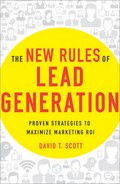Defining Your Target Audience
When you begin a direct mail, e-mail, or cold-calling campaign, you first need to fully define the specifics of your target audience. This is a crucial beginning for any e-mail, direct mail, or cold-calling campaign. Your campaign will not be successful unless you reach the right target customers who have a definite interest in your products or services. Therefore, you need to define your target customers with as much precision and demographic detail as possible.
Once you define your audience, you give these specifics to a list owner, who compiles a list of names and contact information based on your target criteria. A list owner may have an initial list of, say, 500,000 names for a certain category (e.g., pet owners). But when you give them specific demographic criteria (e.g., higher-income cat owners who own expensive breeds of cats), they will apply those specifics to their initial list and give you a targeted list of, say, 50,000 names that match your criteria. (Some list owners may add a surcharge for targeting.)
E-mail and direct mail marketing allow you to get very specific in defining your target audience. For example, let’s say you’re planning an e-mail campaign to market a new gourmet cat food. You’ve determined your best target customers will be cat owners who want to give their cats the highest-quality food.
Which type of e-mail mailing list would get the best response for you: (1) a general list of pet owners, (2) a list of cat owners, or (3) a list of purebred Siamese cat owners? If you use the general list of pet owners, you may end up sending your e-mail offer for gourmet cat food to thousands of people who have no need for it (e.g., dog owners, fish owners, etc.). Using a list of cat owners will get you a better response, but you will still send your offer to many lower-income cat owners who don’t spend a lot of money on luxury items for their pets.
However, when you buy or rent an e-mail list of cat owners, you can ask the list owner to give you a targeted list of cat owners who own more expensive breeds. Siamese cats are a high-class breed that usually sell in the $100—$1,000 range. Therefore, Siamese cat owners probably have a higher household income, and are more likely to spend extra money on their cats and their health. A new brand of gourmet cat food might be of interest to them.
Here’s another example: Let’s say you are sending out an e-mail offer advertising memberships for an exclusive tennis club. Do you want an e-mail list that targets (1) athletes in general, (2) tennis players, or (3) tennis players with $100,000 household incomes? When buying or renting a list of tennis players, I would ask the list owner to target that list to $100,000 income recipients. There may be many tennis players on the initial list who have household incomes of less than $100,000, but who would still be interested in the tennis club membership. But by targeting your first campaign to tennis players with incomes of $100,000 or more, you’re increasing your chances of business.
With cold calling, your targeting is not quite as specific as it is with direct mail or e-mail marketing. But you can still define certain demographics for the potential customers you want to call. Again, cold calling is primarily used for B2B marketing. If you have a software product for accountants, for example, you might define your audience as CEOs of accounting firms with 100 or more employees.
